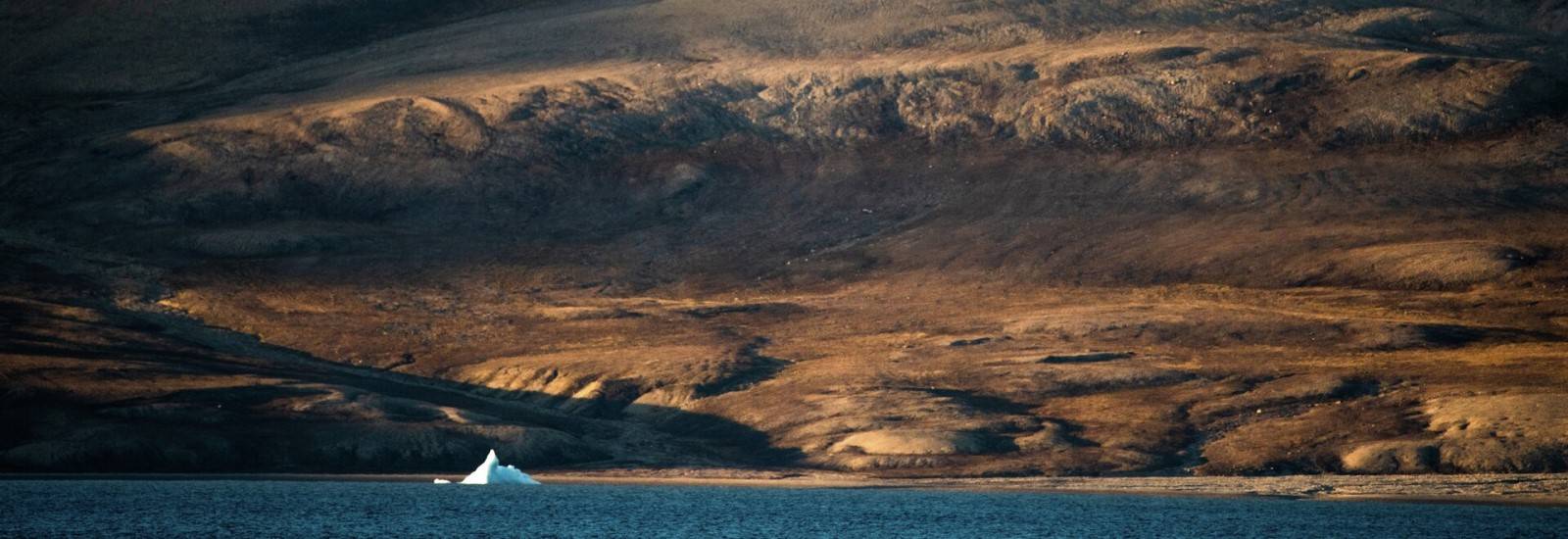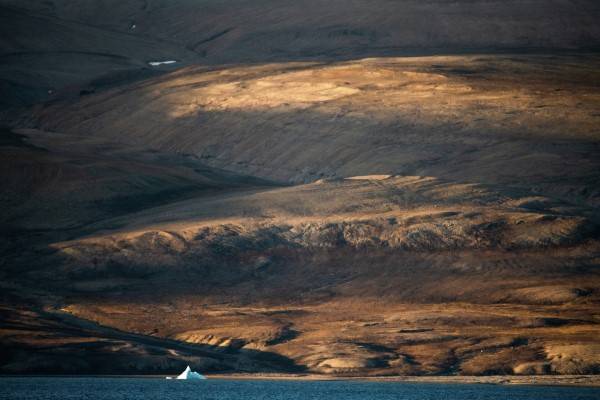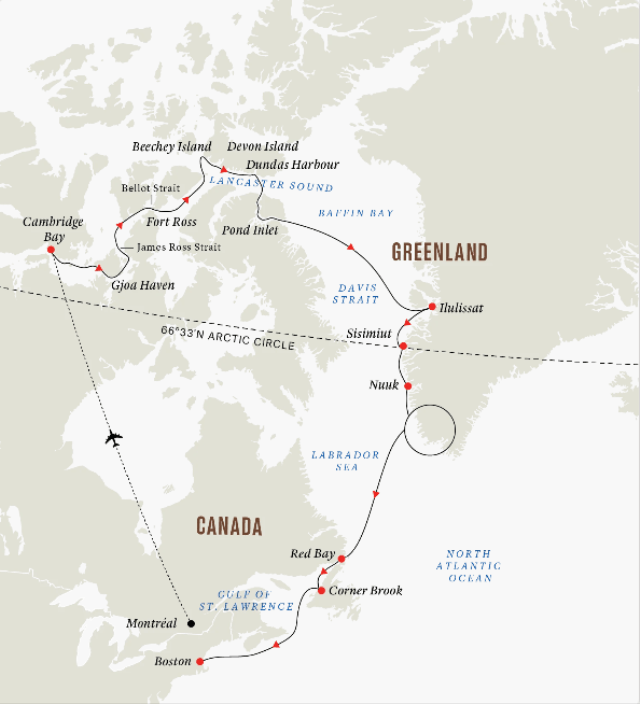DATES / RATES
Rates are listed per person
|
| Start Date | End Date | From EUR | From USD |
|---|
Rates are listed per person
|
| Start Date | End Date | From EUR | From USD |
|---|
ITINERARY
Day 1 Montréal
Day 2 Cambridge
Bay
Day 3-10 The
Northwest Passage
Day 11 Baffin
Bay
Day 12 Ilulissat
Day 13 Sisimiut
Day 14 Nuuk
Day 15 Expedition
day
Day 16 At
sea: Labrador Sea
Day 17 Red
Bay
Day 18 Corner
Brook
Day 19-20 At
Sea
Day 21 Boston
 (Click image to view Ship details)
(Click image to view Ship details)
WHAT'S INCLUDED
Included in your voyage
Hotels
- Overnight in Montréal before the expedition
cruise including breakfast
Flights
- Economy flight from Montréal to Cambridge Bay
Transfers
- Transfer from the hotel in Montréal to the
airport before the Expedition cruise
- Transfer from the airport to the ship in Cambridge Bay
before the Expedition cruise
Expedition Cruise
- Expedition cruise in a cabin of your choice
- Breakfast, lunch and dinner including beverages (house beer
and wine, sodas, and mineral water) in restaurants Aune and Fredheim
- À la carte restaurant Lindstrøm
included for suite guests
- Complimentary tea and coffee
- Complimentary Wi-Fi on board. Be aware that we sail in
remote areas with limited connection. Streaming is not supported.
- Complimentary reusable water bottle to use at water refill
stations on board
- English-speaking Expedition Team who organise and accompany
activities on board and ashore
- Range of included excursions
Onboard Activities
- Experts on the Expedition Team deliver in-depth lectures on
a variety of topics
- Use of the ship’s Science Center which has an
extensive library and advanced biological and geological microscopes
- Citizen Science programme allows guests to assist with live
scientific research
- Professional onboard photographer gives top tips and tricks
for the best landscape and wildlife photos
- Use of the ship’s hot tubs, infinity pool,
panoramic sauna, outdoor and indoor gyms, and outdoor running track
- Informal gatherings with the crew such as daily recaps and
preparation for the day to come
Landing Activities
- Escorted landings with small expedition boats
- Loan of boots, trekking poles and all equipment for
activities
- Complimentary wind and water-resistant expedition jacket
- Expedition Photographers help with your camera settings
Not included in your
voyage
- International flights
- Travel insurance
- Luggage handling
- Optional shore excursions with our local partners
- Optional small-group activities with our Expedition
Team
- Optional treatments in the onboard wellness and spa area
Notes
- All planned activities are subject to weather and ice
conditions
- Excursions and activities are subject to change
- Please make sure you meet all entry and boarding
requirements
- No gratuities expected







